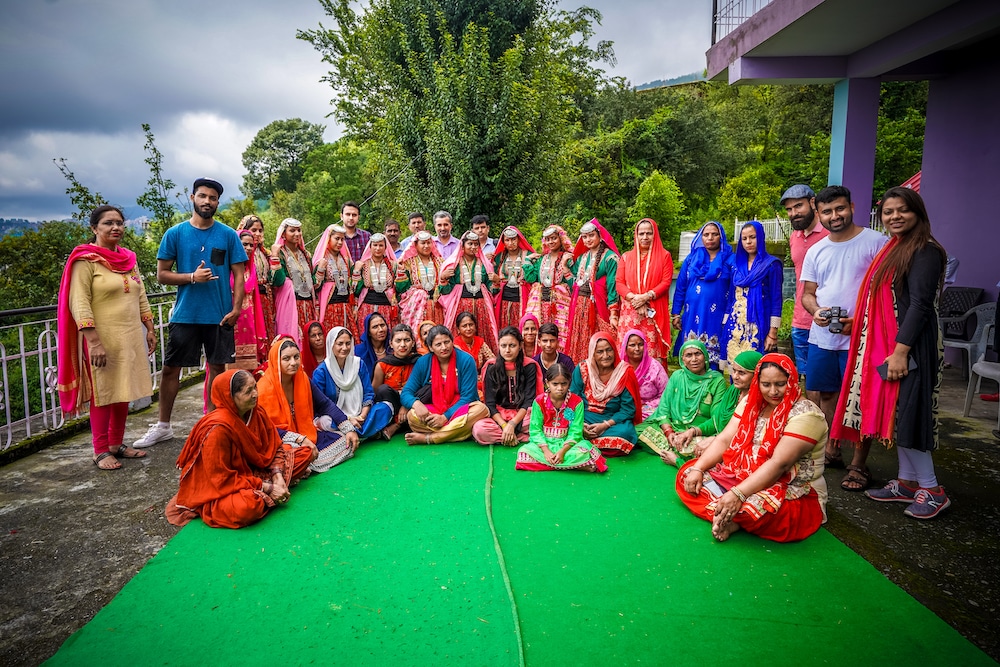
Keeping Tradition with Faith
Gaadi community has a culture filled with various types of beautiful traditions residing in the valleys of Chamba and Dharamshala in Himachal Pradesh. In this serene land, we met this group that consists of 12 women singers, and 2 male singers accompanied by 8 female dancers. They perform the rare art form ‘Nuvala’, in which the community singers depict the folklores of Lord Shiva and Goddess Parvati’s marriage rituals. The songs are about the various events of that wedding. Most of the young girls of the group have learnt singing and dancing from their Guruji, Janme Jai Singh Guleria Ji who has performed for Dharamshala radio station also in recent years. The group is extremely talented and thus are professionals in the art forms like Nuvala (marriage of Lord Shiva), Jamkaara (fun moments at the time of marriage: songs about teases and taunts about the bride and bridegroom), Suhaag (girl’s marriage) and Sehra ( boy’s marriage). They also sing devotional songs of Baba Ji (a local deity bhajan) at ‘Jaagrans’ in Dharamshala.
The group strictly follows the traditional folk song like – Shiv Kailasho ke Vaasi, Bhole balle shaami ka byaah, Jaanni Shiva teri hanjue bo hoi, Mahadeva o mahadeva paanch abe vo kara jo jaanda mere dhudua (other names for Lord Shiva), Sanja riya bela mera day, siddh bo jogi aaya, aaya bole lallariya laal chidi, etc. Their art form includes the Nuvala adance forms which include the female dancers too who wear the traditional Himachali dress while performing, which is specifically worn by brides at the time of marriage. The flaring bottom gown is called Nuachadi; the covering dupatta is called ‘reeda’; and the black ‘dori’ tied on the waist, which is said to be worn by Lord Shiva when he became a ‘Jogi’. The accessories used for ‘Shringaar’ are Chidi and Maang Teeka (the head accessory), Chandrahaar (the silver necklace), Gojri (silver bracelet), Nath (a big nose ring). The group gets around 1 to 2 shows per month but that too usually varies according to seasons. They perform at the time of Baisakhi (besoa) and Lohri (khichdi), and in marriages. Average payment received per show is never fixed payment and sometimes they also perform without charging any fees. For their performances, they use instruments like Dholak, Ghartaal and Kaansi. The songs are played in a particular style which is highly appreciated by the locals over there. The melody of the songs is so catchy and attractive that one automatically starts swaying with the tunes of it.
